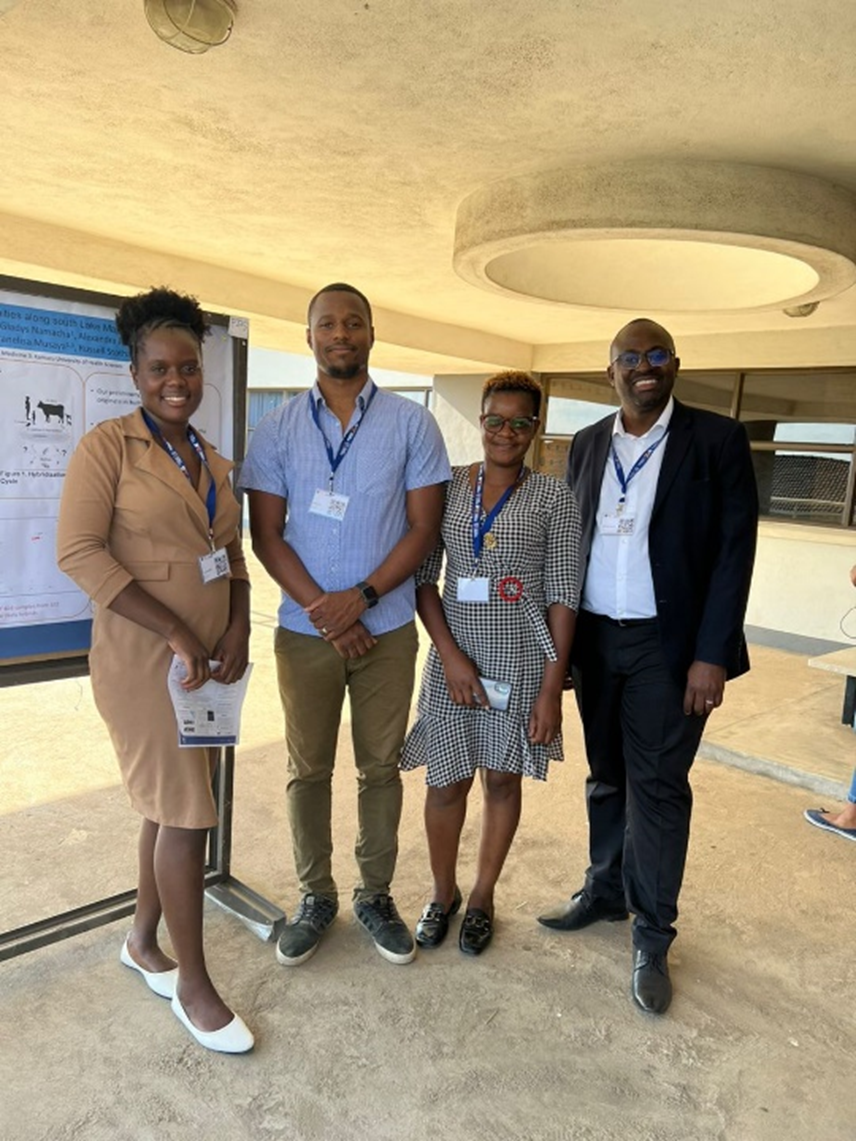
Key members of the Malawian HUGS team have presented their most recent and previous research findings at the Research Dissemination Conference (RDC), in Blantyre on the 24th & 25th November.
Kamuzu University of Health Sciences (KUHeS), formerly Kamuzu College of Nursing (est. 1965) and College of Medicine (est. 1991), hosted a well-attended RDC at its main campus in Blantyre, Malawi. Starting with a marching band fanfare and public procession along Mahatma Gandhi Road, presentations took place main library concourse.
The theme of this RDC was Excellence for life: through multidisciplinary research and innovations. The first of its kind after COVID-19 restrictions. The meeting attracted just over 600 local and international research scientists, public health practitioners and policy-makers.
The HUGS study team made two poster presentations on Identifying hybrid infections in communities along south Lake Malawi and Male Genital Schistosomiasis (MGS) among Local Fishermen along South Shoreline of Lake Malawi in Mangochi District. Each poster led was fully patronized by conference participants and led to lively discussions.
The Co-Principal Investigator for HUGS, Associate Professor Janelisa Musaya coordinated the opening ceremony by Hon. Agnes Nyalonje MP, Minster of Education, Science and Technology. The RDC’s keynote address was given by Professor Louise Kenny, Executive Pro-Vice Chancellor of Faculty of Health and Life Sciences at University of Liverpool.
Prior to the RDC meeting, all HUGS members were in the field conducting a treatment follow-up study on the efficacy of praziquantel treatment in infected livestock along the Mangochi District shoreline. The investigations in livestock are starting to draw together a very productive year following the epidemiology of schistosome infection in local cattle and goats. A particularly notable observation during this last field visit of the cattle under our surveillance was their extensive water contact. Given this is the dry season and inland grazing is poor, cattle are now browsing emergent vegetation in deeper water habitats as shown in this short video. Their recurrent exposure to locally occurring schistosomes from infected snails is now very blatant.